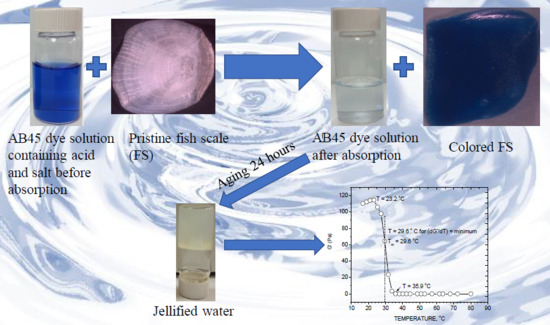Gelation of Textile Dye Solution Treated with Fish Scales
Abstract
1. Introduction
2. Results and Discussion
2.1. Absorption of the Dye
2.1.1. FT-IR Analysis
2.1.2. Dye Removal Efficiency
2.2. Characterization of Gel
2.2.1. Nature and Chemistry of Gel Formation
2.2.2. Rheological Behavior of the Gel
2.3. Factors Affecting the Gel Formation
2.3.1. Size of Fish Scales
2.3.2. Composition of Dye Solution
3. Application and Future Research Directions
4. Conclusions
5. Materials and Method
5.1. Materials and Chemicals
5.2. Phenomenal Description of Gel Formation
5.3. Characterization
5.3.1. FT-IR Analysis
5.3.2. Determination of Dye Removal Efficiency
5.3.3. Rheological Analysis
- Temperature range: 15–80 °C heating (75–10 °C cooling)
- Temperature step: 5 °C/min
- Frequency: 0.6283 rad/sec
- Oscillation Stress: 0.7958 Pa
- Parallel plate geometry: steel plates 40 mm diameter
- Gap: 300 microns
Author Contributions
Acknowledgments
Conflicts of Interest
References
- Karayannakidis, P.D.; Zotos, A. Fish processing by-products as a potential source of gelatin: A review. J. Aquat. Food Prod. Technol. 2016, 25, 65–92. [Google Scholar] [CrossRef]
- Arvanitoyannis, I.S.; Kassaveti, A. Fish industry waste: Treatments, environmental impacts, current and potential uses. Int. J. Food Sci. Technol. 2008, 43, 726–745. [Google Scholar] [CrossRef]
- Kabir, S.M.F. Waste Management by Waste: Removal of Acid Dyes from Wastewaters of Textile Coloration Using Fish Scales. Master’s Thesis, Louisiana State University, Baton Rouge, LA, USA, 2018. [Google Scholar]
- Uzunoğlu, D.; Özer, A. Adsorption of Acid Blue 121 dye on fish (Dicentrarchus labrax) scales, the extracted from fish scales and commercial hydroxyapatite: Equilibrium, kinetic, thermodynamic, and characterization studies. Desalin. Water Treat. 2016, 57, 14109–14131. [Google Scholar] [CrossRef]
- Bilal, M.; Shah, J.A.; Ashfaq, T.; Gardazi, S.M.H.; Tahir, A.A.; Pervez, A.; Haroon, H.; Mahmood, Q. Waste biomass adsorbents for copper removal from industrial wastewater—A review. J. Hazard. Mater. 2013, 263, 322–333. [Google Scholar] [CrossRef] [PubMed]
- Nagai, T.; Suzuki, N. Isolation of collagen from fish waste material—Skin, bone and fins. Food Chem. 2000, 68, 277–281. [Google Scholar] [CrossRef]
- Iqbal, J.; Wattoo, F.H.; Wattoo, M.H.S.; Malik, R.; Tirmizi, S.A.; Imran, M.; Ghangro, A.B. Adsorption of acid yellow dye on flakes of chitosan prepared from fishery wastes. Arab. J. Chem. 2011, 4, 389–395. [Google Scholar] [CrossRef]
- Muslim, T.; Rahman, M.H.; Begum, H.A.; Rahman, M.A. Chitosan and carboxymethyl chitosan from fish scales of Labeo rohita. Dhaka Univ. J. Sci. 2013, 61, 145–148. [Google Scholar] [CrossRef]
- Alcalde, L.B.; Fonseca, G.G. Alkali process for chitin extraction and chitosan production from Nile tilapia (Oreochromis niloticus) scales. Submiss. Artic. Platf. -Lat. Am. J. Aquat. Res. 2017, 44, 683–688. [Google Scholar] [CrossRef]
- Stannard, C.R.; Kabir, S.M.F. Fishy Finery. In Proceedings of the 2018 ITAA Annual Conference Proceesings: Design Presentation, Cleveland, OH, USA, 6 November 2018. [Google Scholar]
- Zynudheen, A. Utilization of Fishery Waste in India; Central Institute of Fisheries Technology: Kerala, India, 2010. [Google Scholar]
- Nagai, T.; Izumi, M.; Ishii, M. Fish scale collagen. Preparation and partial characterization. Int. J. Food Sci. Technol. 2004, 39, 239–244. [Google Scholar] [CrossRef]
- Ogawa, M.; Portier, R.J.; Moody, M.W.; Bell, J.; Schexnayder, M.A.; Losso, J.N. Biochemical properties of bone and scale collagens isolated from the subtropical fish black drum (Pogonia cromis) and sheepshead seabream (Archosargus probatocephalus). Food Chem. 2004, 88, 495–501. [Google Scholar] [CrossRef]
- Faradiella, H.; Ningsih, P.D.F.; Triastuti, W.E. The Acid Solvent Experimental Studies on Gelatin Producing by Utilizing Snapper Fishes Scales Waste (Lutjanus camphecanus sp.). In Proceedings of the AIP Conference Proceedings, Yogyakarta, Indonesia, 15–16 November 2016; p. 020042. [Google Scholar]
- Liu, D.; Zhou, P.; Li, T.; Regenstein, J.M. Comparison of acid-soluble collagens from the skins and scales of four carp species. Food Hydrocoll. 2014, 41, 290–297. [Google Scholar] [CrossRef]
- Marrakchi, F.; Ahmed, M.J.; Khanday, W.; Asif, M.; Hameed, B. Mesoporous carbonaceous material from fish scales as low-cost adsorbent for reactive orange 16 adsorption. J. Taiwan Inst. Chem. Eng. 2017, 71, 47–54. [Google Scholar] [CrossRef]
- Marrakchi, F.; Auta, M.; Khanday, W.; Hameed, B. High-surface-area and nitrogen-rich mesoporous carbon material from fishery waste for effective adsorption of methylene blue. Powder Technol. 2017, 321, 428–434. [Google Scholar] [CrossRef]
- Leuenberger, B.H. Investigation of viscosity and gelation properties of different mammalian and fish gelatins. Food Hydrocoll. 1991, 5, 353–361. [Google Scholar] [CrossRef]
- Koli, J.; Basu, S.; Venkteshwarlu, G.; Choukasy, M.; Nayak, B. Optimization of fish gelatin extraction from skins and bones: A comparative study. Ecol. Environ. Conserv. 2013, 19, 10. [Google Scholar]
- Tinrat, S.; Sila-asna, M. Optimization of gelatin extraction and physico-chemical properties of fish skin and bone gelatin: Its application to Panna Cotta formulas. Curr. Res. Nutr. Food Sci. J. 2017, 5, 263–273. [Google Scholar] [CrossRef]
- Zhang, F.; Xu, S.; Wang, Z. Pre-treatment optimization and properties of gelatin from freshwater fish scales. Food Bioprod. Process. 2011, 89, 185–193. [Google Scholar] [CrossRef]
- Rashid, T.U.; Sharmeen, S.; Biswas, S.; Ahmed, T.; Mallik, A.K.; Shahruzzaman, M.; Sakib, M.N.; Haque, P.; Rahman, M.M. Gelatin-based hydrogels. In Cellulose-Based Superabsorbent Hydrogels; Mondal, M.I.H., Ed.; Springer: Cham, Switzerland; Basel, Switzerland, 2018. [Google Scholar] [CrossRef]
- Kabir, S.M.F.; Sikdar, P.P.; Haque, B.; Bhuiyan, M.R.; Ali, A.; Islam, M.N. Cellulose-based hydrogel materials: Chemistry, properties and their prospective applications. Prog. Biomater. 2018, 7, 153–174. [Google Scholar] [CrossRef] [PubMed]
- Negulescu, I.I. Laboratory Procedure; Louisiana State University: Baton Rouge, LA, USA, 2017. [Google Scholar]
- Bhuiyan, M.R.; Ali, A.; Islam, A.; Hannan, M.; Kabir, S.F.; Islam, M. Coloration of polyester fiber with natural dye henna (Lawsonia inermis L.) without using mordant: A new approach towards a cleaner production. Fash. Text. 2018, 5, 2. [Google Scholar] [CrossRef]
- Calloway, D. Beer-lambert law. J. Chem. Educ. 1997, 74, 744. [Google Scholar] [CrossRef]
- Rodger, A. Concentration Determination Using Beer-Lambert Law. In Encyclopedia of Biophysics; Springer: Berlin/Heidelberg, Germany, 2013; pp. 360–361. [Google Scholar]

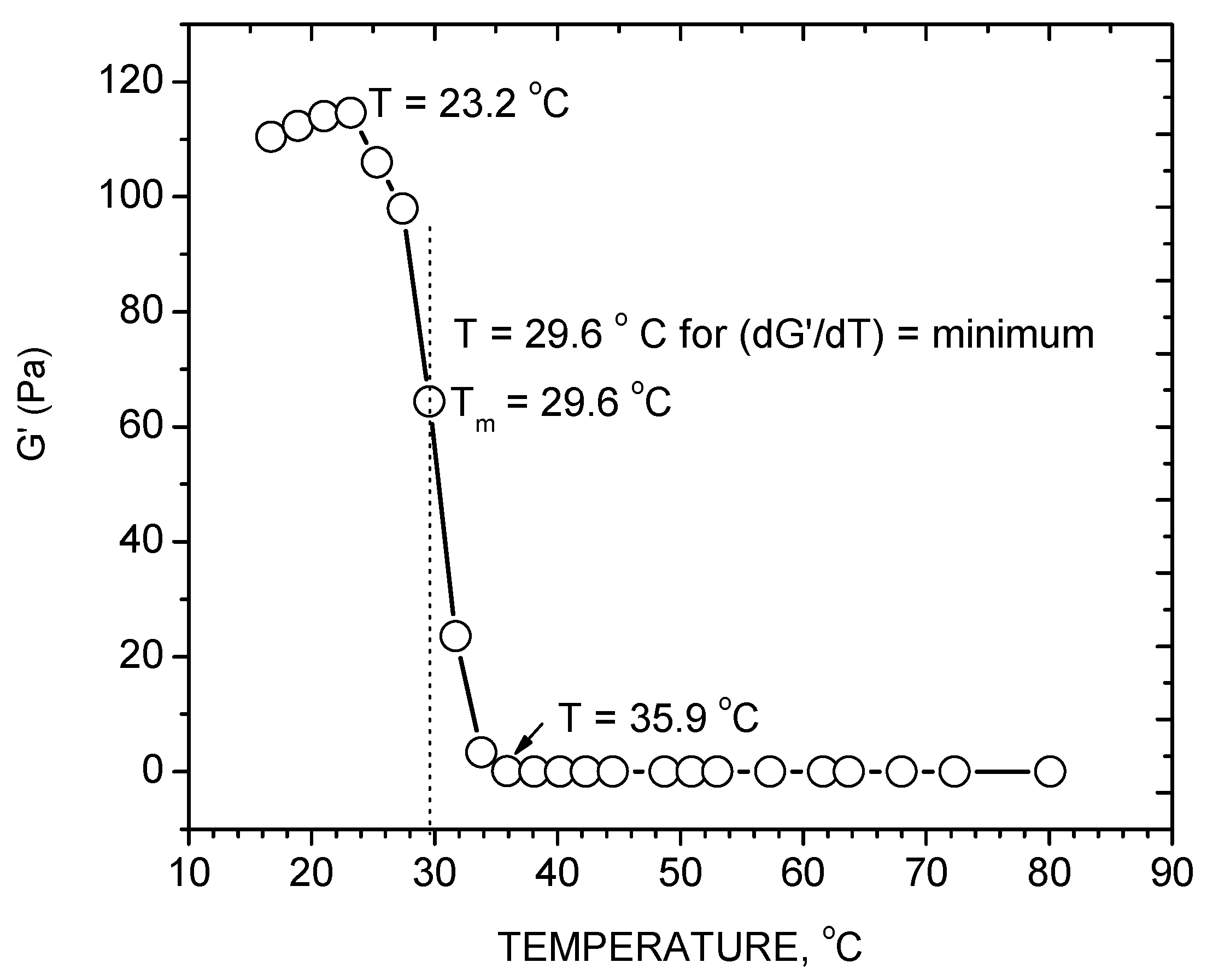
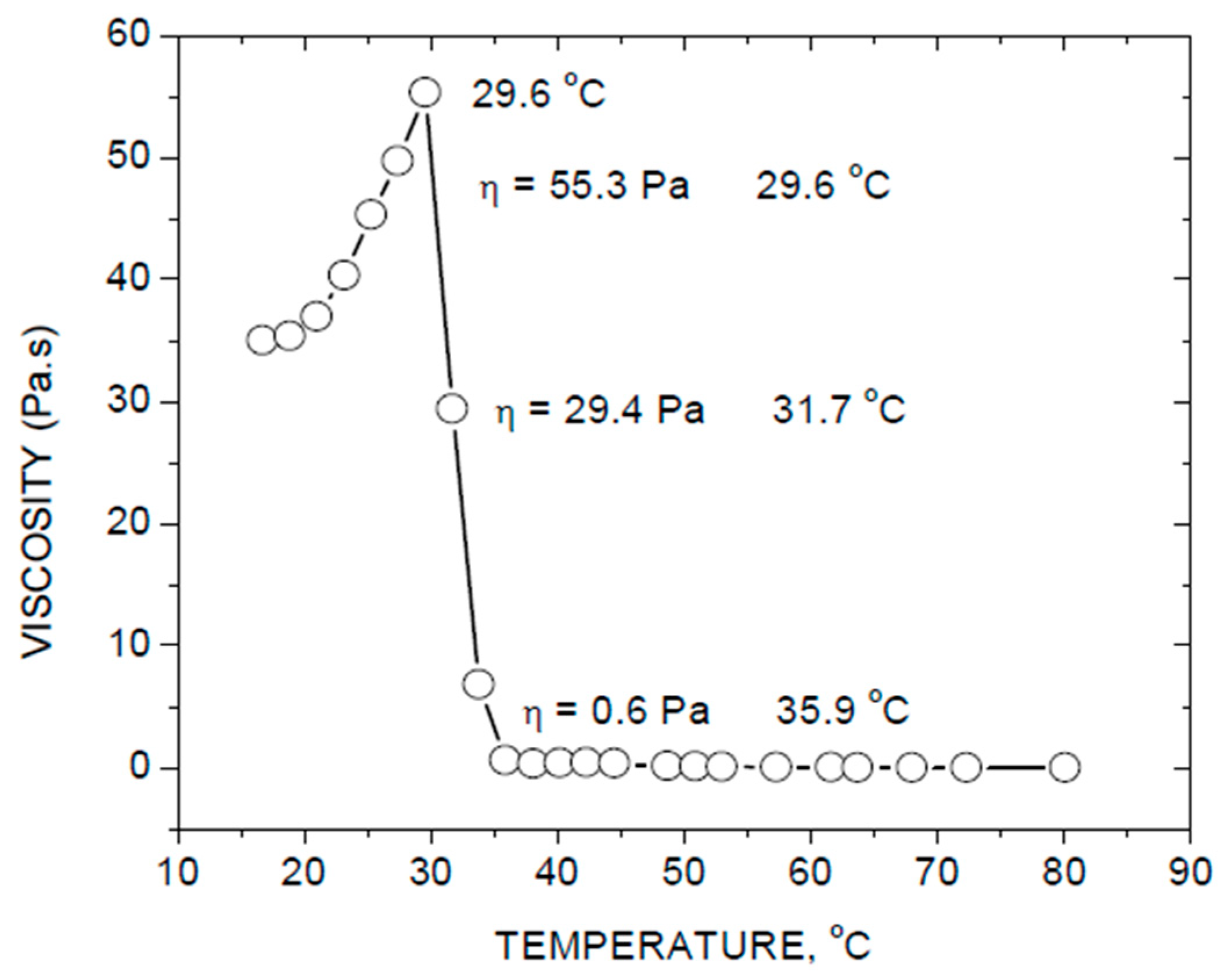
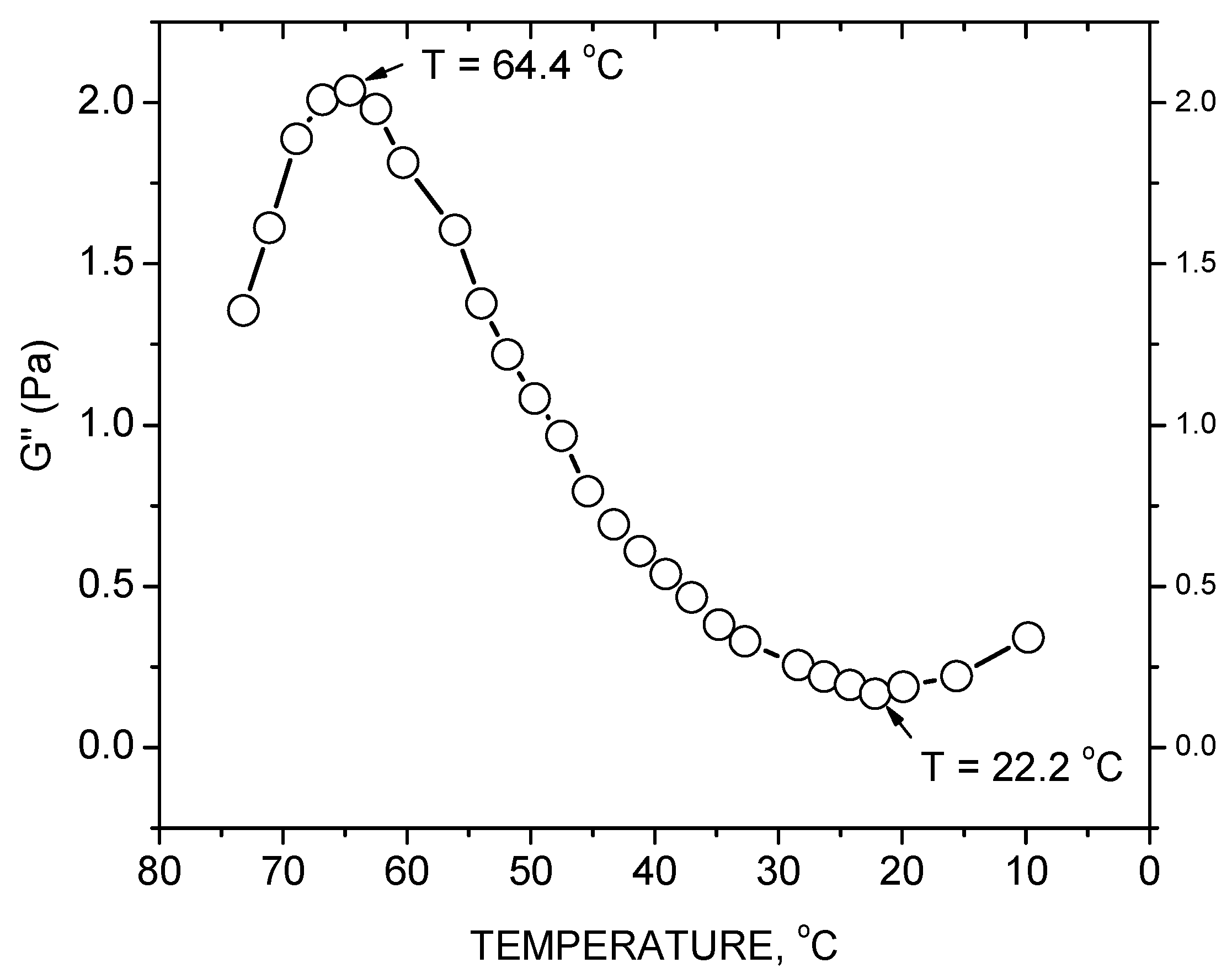
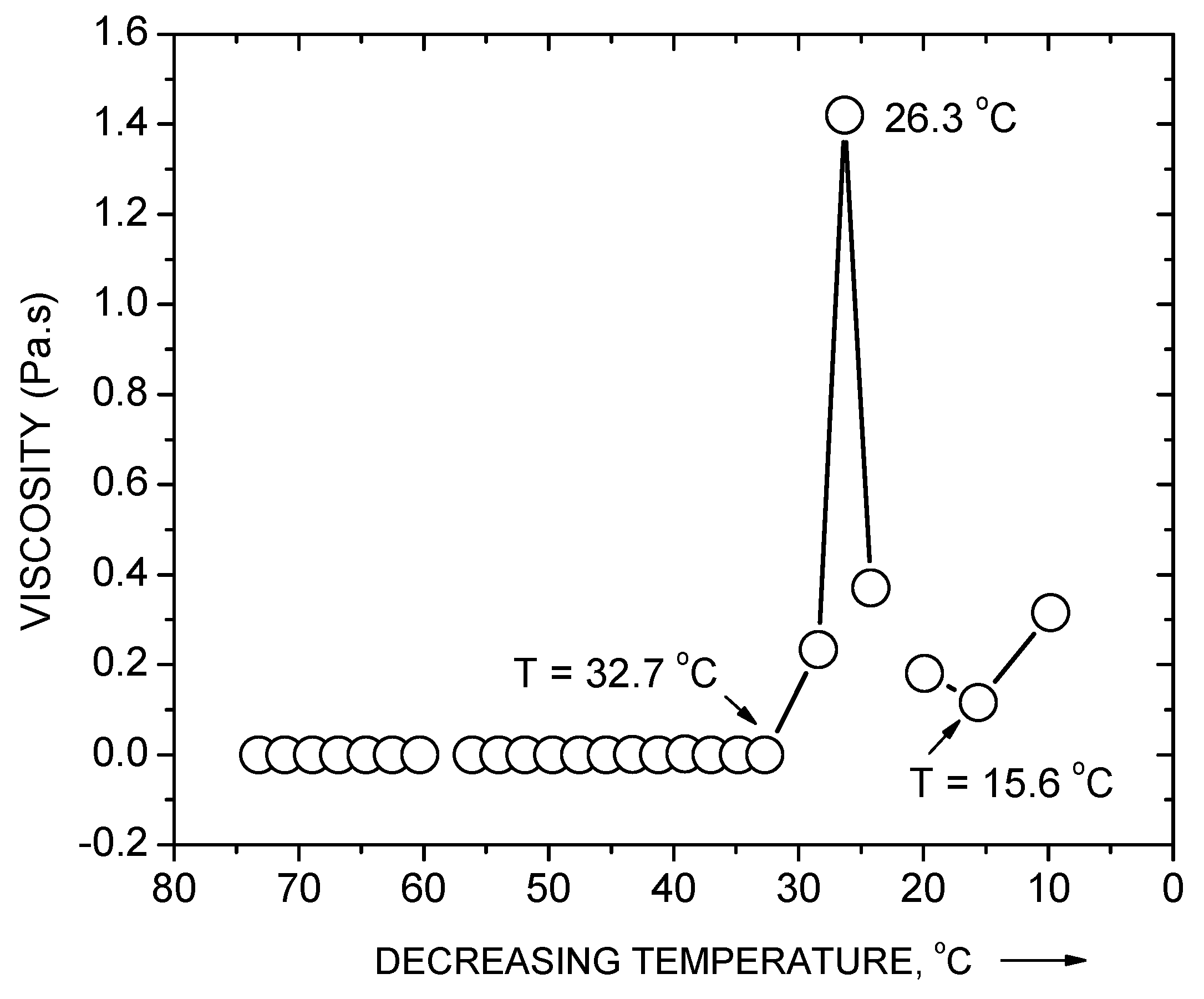

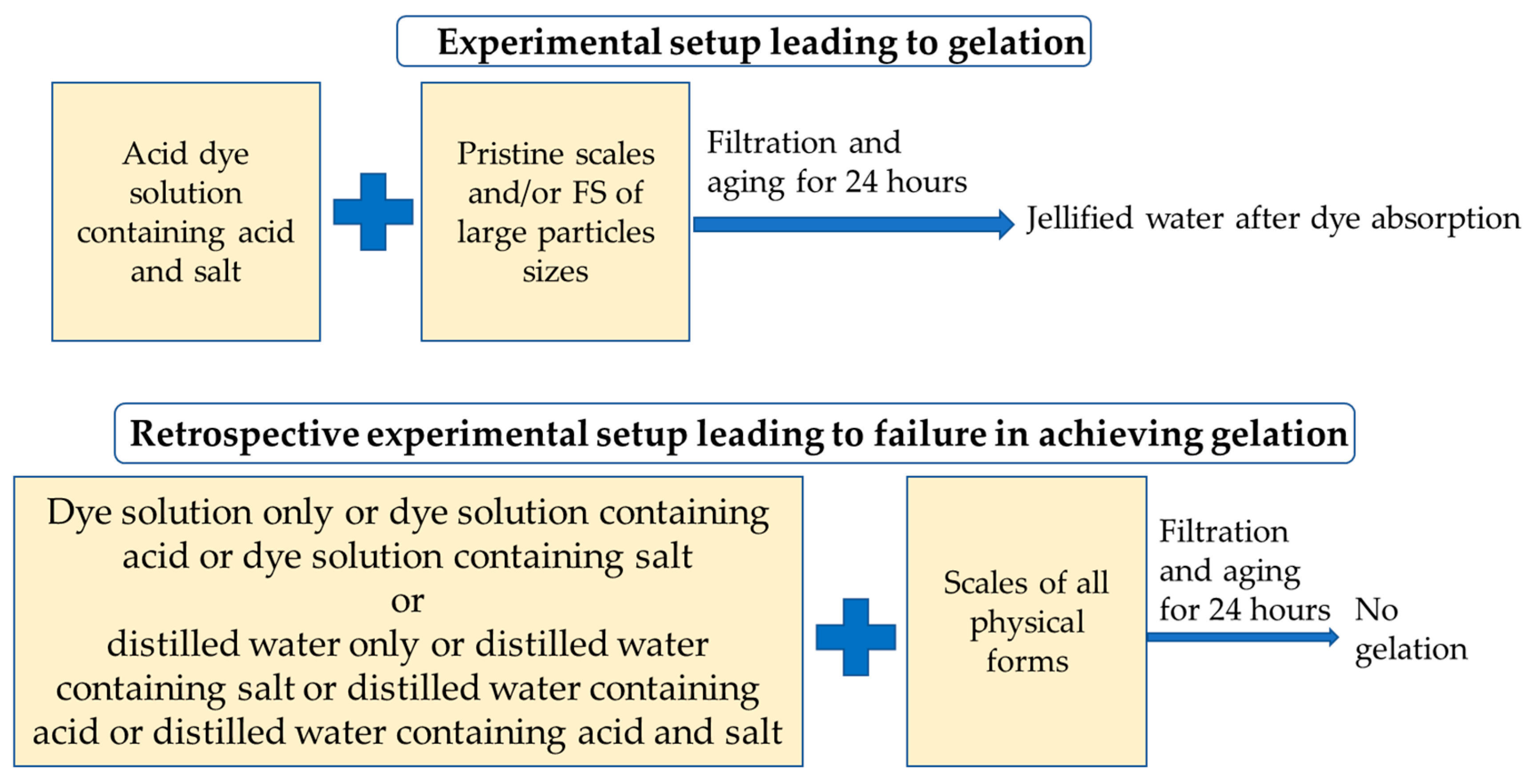
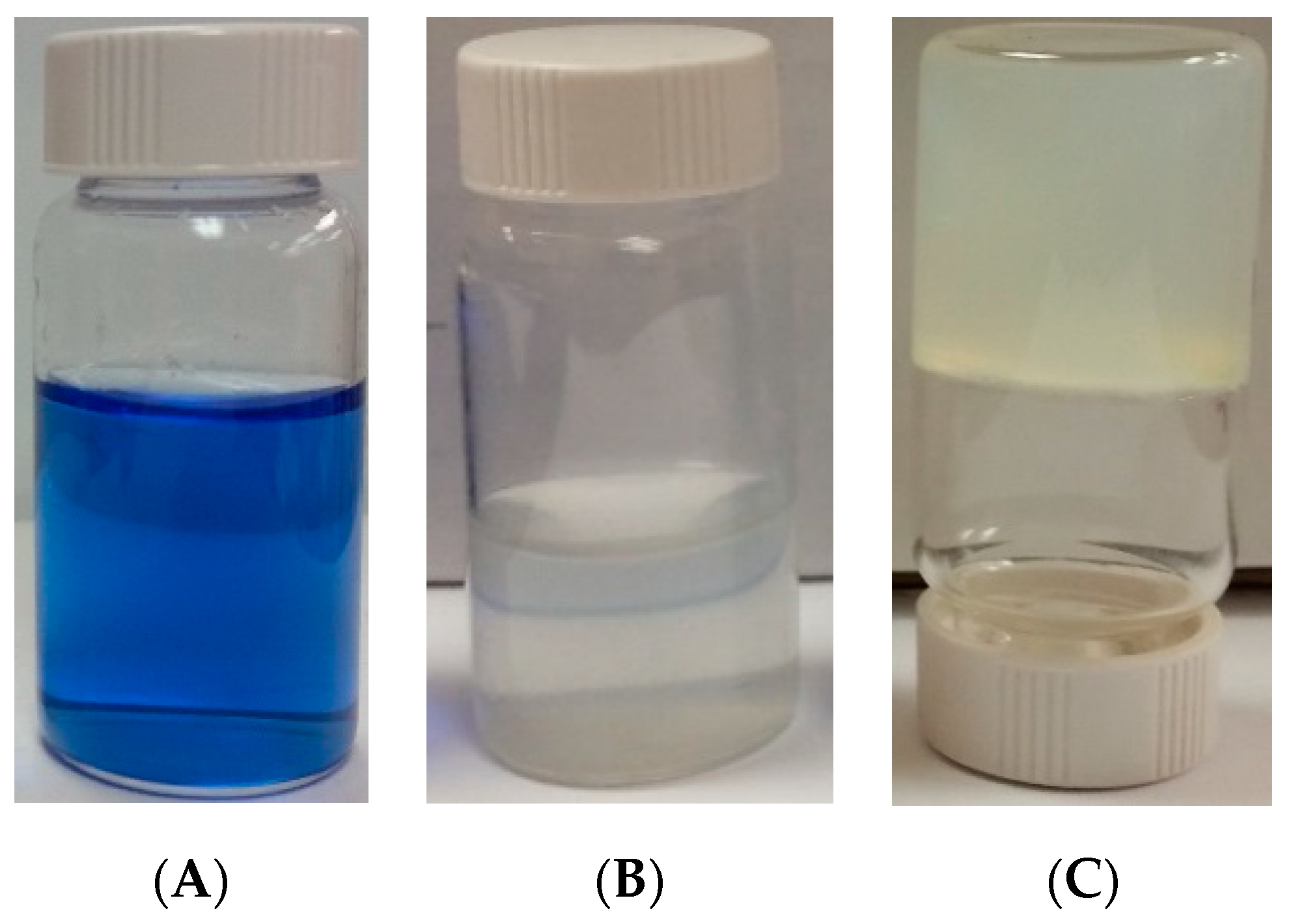
© 2019 by the authors. Licensee MDPI, Basel, Switzerland. This article is an open access article distributed under the terms and conditions of the Creative Commons Attribution (CC BY) license (http://creativecommons.org/licenses/by/4.0/).
Share and Cite
Kabir, S.M.F.; Rashid, T.U.; Negulescu, I.I. Gelation of Textile Dye Solution Treated with Fish Scales. Gels 2019, 5, 37. https://doi.org/10.3390/gels5030037
Kabir SMF, Rashid TU, Negulescu II. Gelation of Textile Dye Solution Treated with Fish Scales. Gels. 2019; 5(3):37. https://doi.org/10.3390/gels5030037
Chicago/Turabian StyleKabir, S M Fijul, Taslim Ur Rashid, and Ioan I. Negulescu. 2019. "Gelation of Textile Dye Solution Treated with Fish Scales" Gels 5, no. 3: 37. https://doi.org/10.3390/gels5030037
APA StyleKabir, S. M. F., Rashid, T. U., & Negulescu, I. I. (2019). Gelation of Textile Dye Solution Treated with Fish Scales. Gels, 5(3), 37. https://doi.org/10.3390/gels5030037






